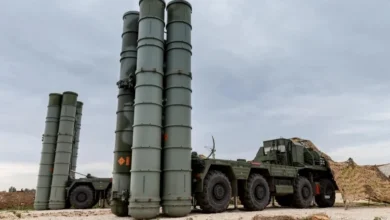
- The Trisonic Wind Tunnel is a system that helps with the aerodynamic design of rockets and re-entry spacecraft by evaluating forces, moments
- The tunnel can simulate flight at speeds from 68 metres per second (0.2 times the speed of sound) to 1,360 metres per second (4.0 times the speed of sound) "The ISRO put out a statement on its official website, which you can read.
The Indian Space Research Organization (ISRO) said on Friday that the test run of hypersonic vehicles with Headquarters of the Integrated Defense Staff (HQ IDS) went well.
The top space research agency in the country said in a statement that the joint hypersonic vehicle trial met the goals that had been set.
ISRO successfully completes hypersonic vehicles test
A tweet from the official ISRO account said: “ISRO and JSIIC have worked together to test out hypersonic vehicles. The tests met all of the requirements and showed that hypersonic vehicles are possible.”
@ISRO and JSIIC @HQ_IDS have jointly conducted Hypersonic vehicle trials.
The trials achieved all required parameters and demonstrated Hypersonic vehicle capability.@adgpi@IAF_MCC@indiannavyMedia
— ISRO (@isro) December 9, 2022
What is a hypersonic vehicle?
A plane, missile, or spaceship that can go five times faster than the speed of sound, or more than Mach 5, is called a hypersonic vehicle. People think of it as cutting-edge technology, and countries like China, India, Russia, and the U.S. have been working on making their hypersonic weapons even more powerful.
As part of its Hypersonic Technology Demonstrator Vehicle programme, Indian scientists are also working on a project to make a hypersonic cruise missile that can do two things. The Indian-made missile will be able to fire both nuclear and regular weapons.
ISRO completes first blow down test of Trisonic Wind Tunnel
ISRO has also finished the first blow down test of the Vikram Sarabhai Space Centre’s (VSSC) newly installed Trisonic Wind Tunnel.
The Trisonic Wind Tunnel is a system that helps with the aerodynamic design of rockets and re-entry spacecraft by evaluating forces, moments, load distribution, and maintaining pressures and acoustic levels on a scaled model.
“The tunnel is about 160 metres long and has a cross section that is no wider than 5.4 metres. The name “trisonic wind tunnel” comes from the fact that different spacecraft can be tested in three flight regimes: below the speed of sound, at the speed of sound, and above the speed of sound. The tunnel can simulate flight at speeds from 68 metres per second (0.2 times the speed of sound) to 1,360 metres per second (4.0 times the speed of sound) “The ISRO put out a statement on its official website, which you can read.






Facebook Comments